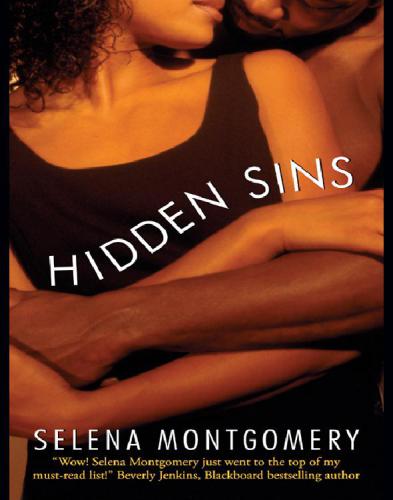
Hidden Sins
کتاب های مرتبط
- اطلاعات
- نقد و بررسی
- دیدگاه کاربران
نقد و بررسی

June 1, 2019
PreS-Gr 2-In a world full of microaggressions, Argentine-American author M�ndez and South Korean-American illustrator Kim team up to offer an affirming answer for a young brown-skinned girl constantly being asked "Where are you from?" After her reply, "I'm from here, from today, same as everyone else," is contested with a "No, where are you really from?," she takes her internalized confusion to her abuelo, because "he knows everything, and like me, he looks like he doesn't belong." He tells her that she comes from the pampas, the gaucho, mountains, blue oceans, hurricanes, and dark storms. He doesn't shy away from hard truths and tells her that she comes from "this land where our ancestors built a home for all, even when they were in chains because of the color of their skin." Each answer takes them into sweeping double-page landscapes of watercolor and ink that add enough context to understand new vocabulary and texture to fill each space. But when she insists where am I really from, he points to his heart and says, "from my love and the love of all of those before us." A great read-aloud with simple yet evocative language, this picture book will validate many young children's experience, and for others will lend itself well to starting conversations around race and racial aggressions. VERDICT A much-needed title that is a first purchase for libraries and classrooms.-Danielle Jones, Multnomah County Library, OR
Copyright 2019 School Library Journal, LLC Used with permission.

Starred review from April 15, 2019
After being repeatedly asked variations on "Where are you from?" the narrator finds out that "I'm from here, from today, same as everyone else," is not an answer that will satisfy those asking. They want to know "where are you really from." The child, who has light-brown skin and hair worn in two afro-puffs, turns to Abuelo for help. He in turn "looks inside his heart for an answer." Lyrical language and luminous illustrations convey his thoughtful response. "You're from the gaucho, brave and strong....But you're also from the warm, blue oceans the copper warriors tried to tame...where our ancestors built a home for all, even when they were in chains because of the color of their skin." By pointing out the child's Argentinean and Puerto Rican cultural heritage as well as mixed racial makeup, Abuelo's answer addresses the multilayered and varied possibilities of a Latinx identity. Ultimately, Abuelo points out, the questioning child comes from his love and that of all those who came before. The question of where someone is "really" from, in the United States, is too often understood as meaning: You look different; you must be from somewhere else. In this case, the illustrations portray a very diverse group of children and adults posing that very question, demonstrating the particular frustrations often experienced by people of mixed race. An ideal vehicle for readers to ponder and discuss their own identities. (Picture book. 4-8)
COPYRIGHT(2019) Kirkus Reviews, ALL RIGHTS RESERVED.

May 15, 2019
Grades 1-3 Tired of being asked where she's from, a little girl brings the question to her abuelo. His smiling response is that she comes from the Pampas, the open, free land . . . from hurricanes and dark storms . . . from this land where our ancestors built a home for all, even when they were in chains because of the color of their skin. Abuelo takes the girl on an imaginative journey through their history and culture, but this doesn't satisfy her, so she repeats the question. Abuelo's second response is more personal, connecting her with the people she loves. Kim utilizes a warm color palette to suffuse the narrative with beautifully sentimental shades of ochre and gold. This touching book addresses a ubiquitous question for children of color, and in the end, the closeness between the girl and Abuelo shows that no matter the questions, she knows exactly where she's from.(Reprinted with permission of Booklist, copyright 2019, American Library Association.)

March 25, 2019
A girl with brown skin and dark curly pigtails encounters variations on the title question over and over. “Is your mom from here?” asks her ballet teacher. “Is your dad from there?” asks a friend’s mother. From her Abuelo, the girl learns she comes from the Pampas region of Argentina, and that she descends from “the gaucho, brave and strong” and those who were once “in chains because of the color of their skin.” As text by Méndez (Blizzard Besties) transports the duo, Kim (La La La) places them at the center of a series of expansive digitized-watercolor spreads that celebrate various natural wonders and history (with no afterword, however—readers are on their own to decode the historic and geographic references, such as the Grandmothers of the Plaza de Mayo, an Argentine human rights organization). Although the book begins as a gentle riposte to narrow cultural and ethnic categorizations, its conclusion reaches out to all readers, evoking both heritage and the human family: pointing to his heart, Abuelo says, “You’re from here, from my love and the love of all those before us.... You are from all of us.” Ages 4–8. Author’s agent: Linda Camacho, Gallt and Zacker Literary. Illustrator’s agent: Claire Easton, Painted Words.

























دیدگاه کاربران